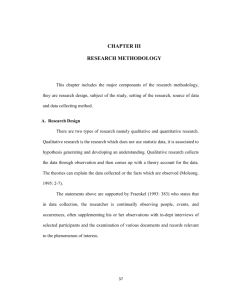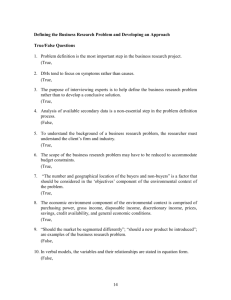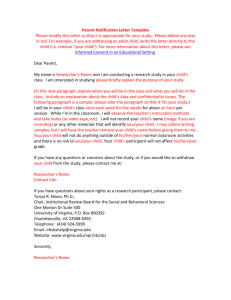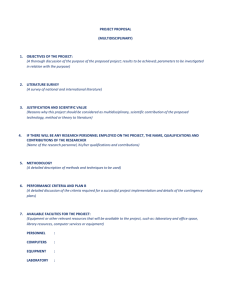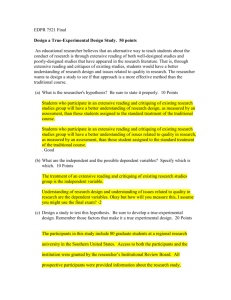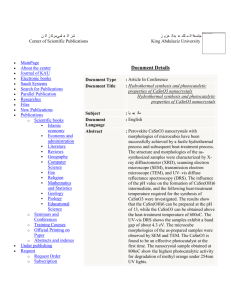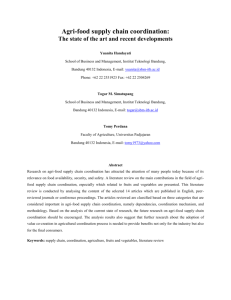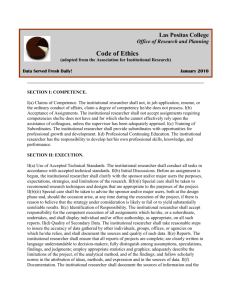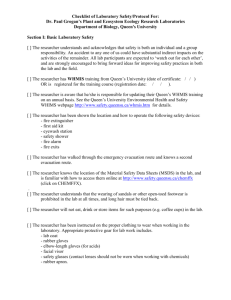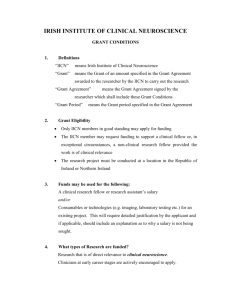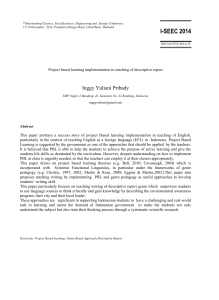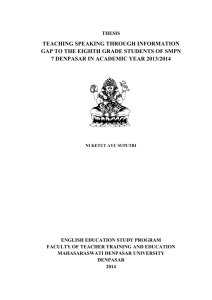chapter i introduction - Institutional Repository of IAIN Tulungagung
advertisement
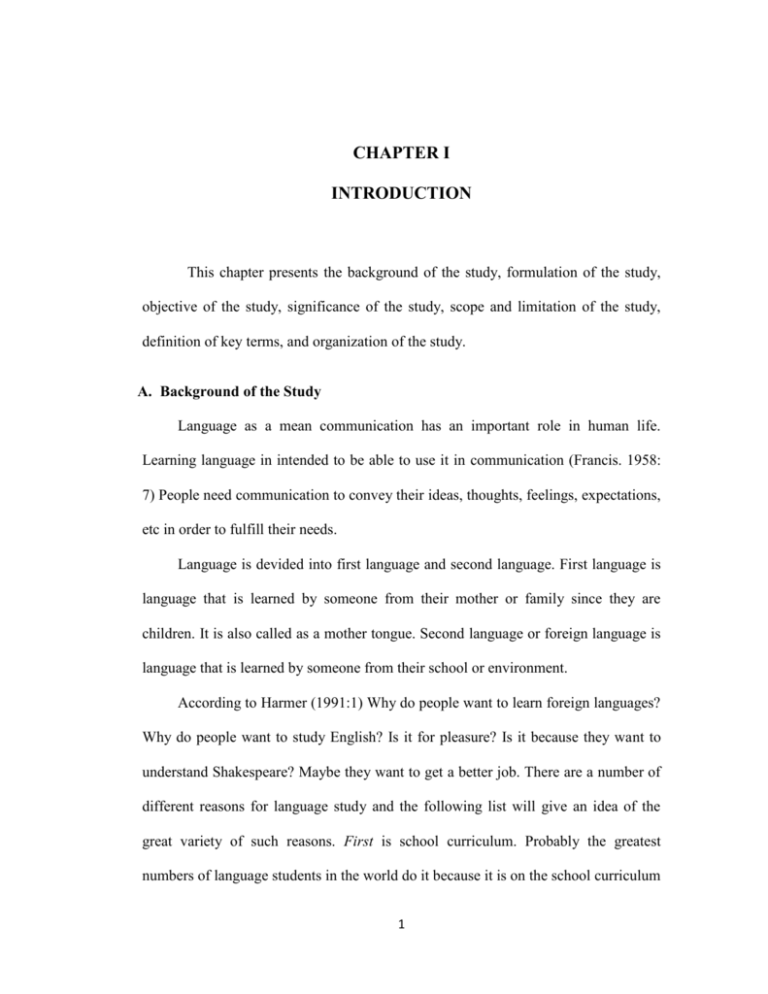
CHAPTER I INTRODUCTION This chapter presents the background of the study, formulation of the study, objective of the study, significance of the study, scope and limitation of the study, definition of key terms, and organization of the study. A. Background of the Study Language as a mean communication has an important role in human life. Learning language in intended to be able to use it in communication (Francis. 1958: 7) People need communication to convey their ideas, thoughts, feelings, expectations, etc in order to fulfill their needs. Language is devided into first language and second language. First language is language that is learned by someone from their mother or family since they are children. It is also called as a mother tongue. Second language or foreign language is language that is learned by someone from their school or environment. According to Harmer (1991:1) Why do people want to learn foreign languages? Why do people want to study English? Is it for pleasure? Is it because they want to understand Shakespeare? Maybe they want to get a better job. There are a number of different reasons for language study and the following list will give an idea of the great variety of such reasons. First is school curriculum. Probably the greatest numbers of language students in the world do it because it is on the school curriculum 1 whether they like it or not. For many of these students English, in particular, is something that both they and their parents want to have taught. For others, however, the study of languages is something they feel neutral (or something negative) about. Second is advancement. Some people want to study English (or another foreign language) because they think it offers a chance for advancement in their professional lives. They will get a better job with two languages then if they only know their mother tongue. English has a special position here since it has become the international language of communication. Third is target language community. Some language students find themselves living in a target language community (either temporarily or permanently). A target language community (TLC) is one where the inhabitants speak the language which the student is learning: for students of English an English speaking country would be a TLC. The students would need to learn English to survive in that community. Fuorth is english for specific purpose. The term English for Special or Specific Purpose has been applied to situation where students have some specific reason for wanting to learn the language. For example, air traffic controllers need English primarily to guide aircraft through the skies. They may not use the language at all apart from this. Business executives need English for international trade. Waiters may need English to serve their customers. These needs have often been referred to as EOP (English for Occupational Purposes). Fifth is culture. Some students study a foreign language because they are attracted to the culture of one of the TLCs. They learn the language because they want to know more about the people who speak it, the places where it is spoken and the writings which it 2 has produced. Sixth is miscellaneous. There are of course many other possible reasons for learning a language. Some people do it just for fun – because they like the activity of going to class. Some people do it because they want to be tourists in a country where that language is spoken. Some people do it just because all their friends are learning the language. Language abilities refer to the skills in using a language communicatively. There are the kinds of language abilities in language teaching, receptive skills (listening and reading) and productive skills (speaking and writing). Thus, speaking is the productive skill that consists of producing systematic verbal utterances to convey meaning (Nunun. 2003: 48). To most people, mastering the art of speaking is the single most important aspect of learning a second or foreign language, an success is measured in terms of ability to carry out a conversation in the language. One of the big questions in any second language teachers’ head is “how do we develop our students’ speaking English?” (Fauziati. 2005:126). Nowadays, many teachers agree that students should learn to speak the second language by interacting to others. For this case, students should master several speaking components’, such as: comprehension, pronunciation, grammar, vocabulary, and fluency. In brief, English teacher should be creative in developing their teaching learning process to create good atmosphere, improve the students speaking skill, give 3 attention to the speaking components’, and make the English lesson more exiting. One way to make it is by using media. Media which often used by teachers are cards. Cards can used for memorizing vocabularies; arrange the sentences, describing something, telling story and games. It makes students easier find new ideas for speaking and creates enjoy full learning in the class. Teacher must choose what cards will be given to the students, for elementary school and Junior High School teacher can use simple card in order to easy to speak. Based on it, the writer tried to describe the application of cards as media in improving students’ speaking ability that had the important role in teaching English. Therefore; the writer decided to choose the title for research “The Implementation of Cards in Teaching Speaking at Eighth Grade of MTsN Bandung in Academic Year 2011/2012”. B. Formulation of the Study Based on the background of the studythe researcher can formulate the research problem as follow: 1. How is teaching speaking by using cards? 2. What are the problems of teaching speaking by using cards? 3. What are the solutions taken by the teacher? 4. How is the evaluation of teaching speaking? 4 C. Objective of the Study This study is aimed of examining the process of teaching speaking by using cards, the problems of teaching speaking by using cards, the solution taken by the teacher, and evaluation of teaching speaking. D. Significance of the study Researcher hopes that the result of this study will give contribution to: 1. The students The result of this study will add new experience for the student in learning and teaching process especially in teaching English, it is expected that the research can be one of the way to mastering English well. 2. The teachers It will be easier for the teacher in teaching speaking English by implementing cards. It is also to provide additional information to improve quality of teaching to reach the goal. 3. The researcher The researcher can enrich his method because it will give some knowledge to him. Therefore; the researcher knows the benefit of teaching speaking by using cards. Optimally, the researcher gets useful experiences in teaching English speaking using cards. 5 4. The society The result of the research will be useful science for education. Especially in teaching and learning English through a proper media. E. Scope and Limitation of the Study The study will be done only with the eight grade of MTs Negeri Bandung. This study focuses on the process of teaching speaking using cards in teaching speaking, the problems faced by the students and the problems’ solving. F. Definition of key terms The definition is the key terms are given in order to avoid misunderstanding and misinterpretation. Those terms are: 1. The Conceptual Meaning a. Implementation is activity required for developing an instructional strategy and can considered in terms of the input, process and output model. b. Cards are many cards which used in teaching speaking. c. Speaking is expressing the opinion openly. It is specified language, the ability to express oneself in life situation or the ability to report act by using the expression in accordance with situation. 2. The Operational Meaning Based on the definition above the writer views that “The implementation of describing cards in teaching speaking for eighth grade of MTsN Bandung in 6 academic year 2011/2012” meants that the study was done in that formal education institution to picture out the process of using cards in teaching English occured there in the classroom. G. Organization of the Study To write a valuable thesis, it required arrangement systematically. The organizations of the study consist of some chapters. Chapter I is introduction. It includes of background of study, formulations of problems, objectives of study, significance of study, scope of study, scope and limitation of study, definition of key terms, and organization of study. Chapter II is review of related literature. It includes of teaching speaking, teaching speaking through cards and the adolescent learner. Chapter III is research methodology. It includes of research design, subject of the study, place ant time of the research, sourch of data, data collecting method and instrument and data analyzing method. Chapter IV is research finding and discussion. And Chapter V is conclusion and suggestion. 7

